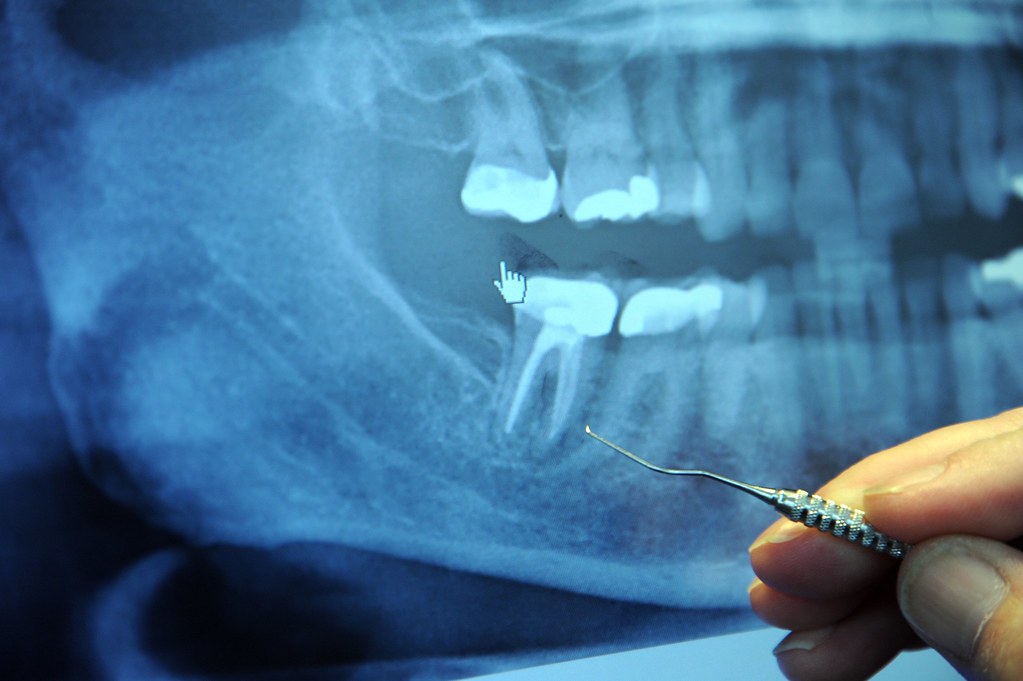Updated 6/15/2020
The very name “root canal” can conjure dreadful notions of pain and suffering in the minds of patients. It’s no wonder that many people put off getting a root canal, fearing both pain during the root canal procedure and the soreness that could come afterwards.
Fortunately, thanks to better techniques, improved technology, and advances in anesthetics in modern dentistry, today’s root canals are more comfortable for patients than they once were.
While some soreness after a root canal is normal, the good news is that this pain is manageable and should decrease over time. Here are some facts about how long a root canal should be sore.
Is Pain After a Root Canal Normal?

The short answer is “yes.” Since a root canal procedure involves the removal of sensitive tissue from the center of a tooth, some discomfort is expected. Blood vessels and nerves inside the pulp chamber may already be sore and inflamed due to an infection. The process of cleaning the area out can hurt. Luckily, anesthetics control the pain during the procedure.
But for how long is a root canal sore afterwards? In most cases, the pain afterward is temporary. There might be some pain and tenderness for a few days in the area of the tooth and the surrounding gums. It should become less and less each as time passes.
Here are some ways to alleviate soreness after a root canal until it subsides on its own:
- Avoid chewing hard foods around the affected tooth for several days.
- Avoid extremely hot or cold food and beverages.
- Continue practicing proper dental hygiene by flossing and brushing.
- Take pain medication prescribed by your dentist, following the instructions.
- If your dentist has not provided a prescription, try over-the-counter Ibuprofen or Acetaminophen, or a topical anesthetic.
- Do not poke or prod the affected tooth and surrounding area.
- Rinsing with salt water will soothe the area andclear the mouth of any bacteria.
So When Does Root Canal Pain Go Away?

Everyone’s tolerance for pain is different, so there is no set timeline for how long root canal pain lasts. In most cases, patients will experience mild discomfort or pain for the first few days after treatment. Generally, the pain is short-lived as long as the patient uses proper dental hygiene.
If the pain lasts longer than a few days or gets worse, it could be a sign that something is wrong. It may not be healing properly, or there could be the start of an infection. Contact the dentist if the pain is prolonged. They will either offer suggestions to alleviate it or have you come in to take a look.
Can Root Canal Pain Come and Go?
At the beginning of your root canal procedure, you will be given a local anesthetic, which will help numb pain in the area around the affected tooth during the process.
Once the local anesthetic wears off, patients usually experience some soreness. The pain usually takes the form of a steady ache or throbbing pain. It does not, as a general rule, come and go.
If you do experience recurring pain that comes and goes, it might be a sign of a different problem, such as an infected nerve ending. If you find the pain coming and going, contact your dentist or oral surgeon. Try to give them some idea of when the pain comes on, and what you are doing at the time. For example, pain that only occurs when eating might give the dentist a clue to the problem.
Unfortunately, in a small number of cases, a root canal procedure may need to be redone. Dentists will typically tell patients what type of discomfort they can expect to have and how long it will last. Any pain that is different than that should be brought to the dentist’s attention right away.
Do I Really Need a Root Canal?

Root canals are needed when the inside of a tooth is decayed, has died, and become inflamed or infected.
This sensitive area of the inner tooth, called the pulp chamber, is filled with tissue, blood vessels, and nerves. It also features one or more pathways (canals) that extend from the roots of each tooth into the bone. When the pulp chamber is damaged or infected, a root canal is performed to restore the tooth.
Root canal procedures are commonplace and involve extracting the damaged pulp from inside the affected tooth and then filling any vacant canals with gutta-percha, a rubbery plastic-like material that provides insulation for the chamber. The tooth is then capped with a temporary crown until the patient returns later to receive a permanent one.
What Is an Endodontist? Do I Need One if I Experience a Painful Root Canal?

Performing root canals is a branch of dentistry known as endodontics. While some dental health professionals, called endodontists, specialize in endodontics exclusively, many dentists offer endodontic services, too.
Many root canal procedures are straightforward with a single, easy-to-reach root. Most dentists will be comfortable handling these routine cases. Others, however, might involve a root that branches off into several tiny, twisted segments. For these more complex situations, a dentist will typically refer the patient to an endodontist.
Whether a dentist or endodontist is scheduled to perform the procedure, the patient always has the right to ask questions or get a second opinion. Reliable dental professionals will do what they can to make sure their patients are getting the most appropriate care.
Dangers Of Not Getting a Root Canal
Misconceptions about pain often lead people to put off getting a root canal. This is not recommended for several reasons:
- Avoiding a root canal could cause more pain.
- There is a higher risk of having the infection spread to other areas.
- Delaying treatment can lead to an abscessed tooth.
- There is a higher risk of losing the infected tooth.
Finding out that a root canal procedure is needed does not have to be bad news. Ignoring the problem will not make the pain stop. In the long run, the temporary discomfort that comes along with the treatment is far easier to manage than the pain of an untreated tooth. Most patients feel it’s worth it to save the tooth and make it as good as new.


